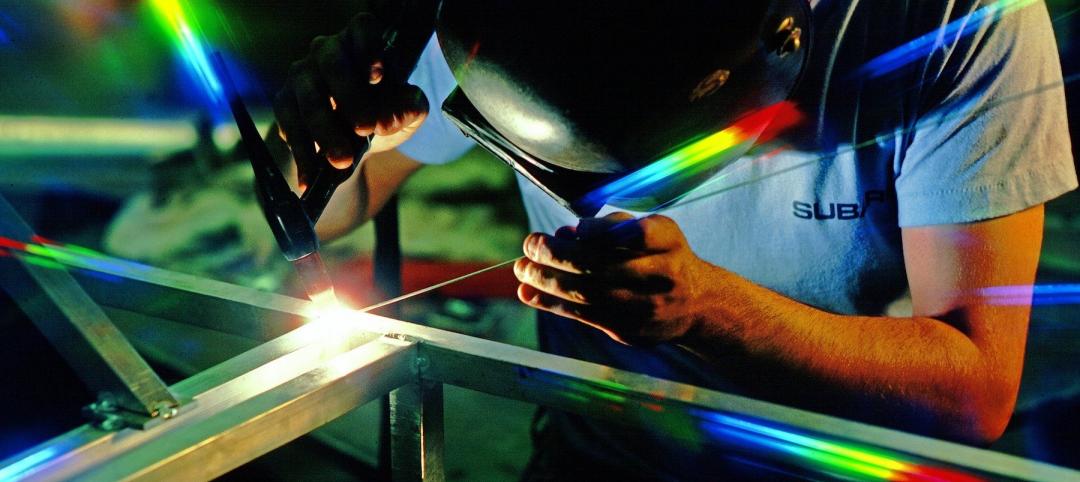Artificial intelligence doesn’t always get the best wrap. From fictional takes on the technology such as Skynet, from The Terminator series, destroying the world and Westworld’s new foreboding take on AI, to Stephen Hawking’s very real warning that artificial intelligence could end mankind, AI certainly doesn’t get as much love as other novel forms of technology like augmented reality or drones.
That doesn’t mean, however, AI isn’t currently being used for very useful applications. For example, a software firm based in Milan, Italy has been attempting to use machine learning algorithms to help buildings predict when their critical systems are about to fail.
According to newscientist.com, CGnal recently analyzed a year’s worth of data, such as temperature, humidity, and electrical use, from heating and ventilation units in an Italian hospital. The data related to appliances in operating theaters, first aid rooms, and corridors.
The firm then trained a machine learning algorithm on data from the first half of 2015 and looked for differences in the readings of similar appliances. When it was tested on data from the second half of the year, the system predicted 76 out of 124 real faults, including 41 out of 44 where an appliance’s temperature rose above tolerable levels, with a false positive rate of 5%, newscientist.com reports.
Augury, a start-up based in the United States, is also experimenting with machine learning. The company uses acoustic sensors that they install in machines to listen for audible changes in function in order to achieve the same result of predictive monitoring. So far, Augury has used the technology to diagnose machines in facilities such as hospitals, power plants, data centers, and a university campus.
By predicting these issues before they occur, facilities could be fixed before a crash ever occurs, saving time and money.
Related Stories
Wood | Nov 16, 2022
5 steps to using mass timber in multifamily housing
A design-assist approach can provide the most effective delivery method for multifamily housing projects using mass timber as the primary building element.
Giants 400 | Nov 14, 2022
4 emerging trends from BD+C's 2022 Giants 400 Report
Regenerative design, cognitive health, and jobsite robotics highlight the top trends from the 519 design and construction firms that participated in BD+C's 2022 Giants 400 Report.
Contractors | Nov 14, 2022
U.S. construction firms lean on technology to manage growth and weather the pandemic
In 2021, Gilbane Building Company and Nextera Robotics partnered in a joint venture to develop an artificial intelligence platform utilizing a fleet of autonomous mobile robots. The platform, dubbed Didge, is designed to automate construction management, maximize reliability and safety, and minimize operational costs. This was just one of myriad examples over the past 18 months of contractor giants turning to construction technology (ConTech) to gather jobsite data, manage workers and equipment, and smooth the construction process.
University Buildings | Nov 13, 2022
University of Washington opens mass timber business school building
Founders Hall at the University of Washington Foster School of Business, the first mass timber building at Seattle campus of Univ. of Washington, was recently completed. The 84,800-sf building creates a new hub for community, entrepreneurship, and innovation, according the project’s design architect LMN Architects.
Sponsored | Steel Buildings | Nov 7, 2022
Steel structures offer faster path to climate benefits
Faster delivery of buildings isn’t always associated with sustainability benefits or long-term value, but things are changing. An instructive case is in the development of steel structures that not only allow speedier erection times, but also can reduce embodied carbon and create durable, highly resilient building approaches.
Mass Timber | Aug 30, 2022
Mass timber construction in 2022: From fringe to mainstream
Two Timberlab executives discuss the market for mass timber construction and their company's marketing and manufacturing strategies. Sam Dicke, Business Development Manager, and Erica Spiritos, Director of Preconstruction, Timberlab, speak with BD+C's John Caulfield.
Green | Jul 26, 2022
Climate tech startup BlocPower looks to electrify, decarbonize the nation's buildings
The New York-based climate technology company electrifies and decarbonizes buildings—more than 1,200 of them so far.
Building Technology | Jun 9, 2022
GSA Green Proving Ground program selects six innovative building technologies for evaluation
The U.S. General Services Administration’s (GSA) Green Proving Ground program, in collaboration with the U.S. Department of Energy, has selected six innovative building technologies for evaluation in GSA’s inventory.
Smart Buildings | Jun 1, 2022
Taking full advantage of smart building technology
Drew Deatherage of Crux Solutions discusses where owners and AEC firms could do better at optimizing smart technology in building design and operations.
Sponsored | BD+C University Course | May 10, 2022
Designing smarter places of learning
This course explains the how structural steel building systems are suited to construction of education facilities.

















